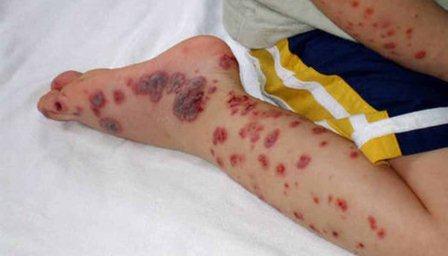More than 3000 cases of Chikungunya Virus in 16 states
The number of reported cases of chikungunya, a virus not unlike dengue that is also spread by mosquitoes, has more than doubled since June, the Health Secretariat said today.
There are now 3,306 cases of the virus in 16 states, up from 1,436 in 10 states less than two months ago. A federal health official said 10% of the cases have required hospitalization due to longer duration of the disease.
While rarely fatal, the disease by most accounts can be painful. A Mexico News Daily reader from Ayutla de los Libres in Guerrero, commenting on a July 14 story on the virus, said he and his wife spent two days “in great pain,” with feet too swollen to walk on, a headache that lasted three days, aching joints and tender skin.
Guerrero, Oaxaca, Chiapas and Michoacán are the states with the largest number of cases of this desease (approximately 2,800 cases among these 4 states).
While isolated cases have been detected in Coahuila, Tamaulipas, Veracruz, Tabasco, Campeche, Yucatán, Quintana Roo, Jalisco, Colima, Nayarit, Morelos and Estado de México.
Here in Yucatán, the General Directorate of Epidemiology (DGE) of the Federal Ministry of Health (SSA), reported three new cases of chikungunya on Tuesday August 4th, for a total 10 cases during epidemiological week number 29 (19 to July 25).
Chikungunya’s chief symptoms are fever and joint pain, while others are headache, muscle pain, joint swelling or a rash, and can be severe and disabling, according to the U.S. Centers for Disease Control and Prevention (CDC). Most patients feel better within a week, but others can experience joint pain for months.
Newborns, older adults (over 65) and people with high blood pressure, diabetes or heart disease are more at risk of suffering severe symptoms.
Those symptoms normally appear three to seven days after being bitten by an infected mosquito.
There is neither a vaccine to prevent the virus nor a medicine to treat it.
One consolation to those who have been infected is that they are likely to be protected from future infections, says the CDC.
As with dengue, prevention begins with removing any containers of standing water that may attract mosquitoes, using repellent, wearing long sleeves and pants, and staying in places with air conditioning or that have window and door screens.
Victims are urged to get lots of rest, drink lots of fluids and take medicines such as Ibuprofen, Naproxen, Acetaminophen or Paracetamol to relieve fever and pain, advises the CDC website.
Mexican health authorities say they have spent 719 million pesos on education and information and containment and fumigation since the chikungunya virus first appeared in Mexico in June 2014. Some 30,000 health workers have been employed in tackling the problem, they said.
The rapid spread of the virus has been attributed to the rains that have been seen in much of the country, primarily in tropical areas. But officials don’t discount the possibility that the virus will move northward.
One area that has been free of any cases is the Federal District because the mosquitoes that transmit chikungunya have not adapted to the high altitude.
– Source: http://mexiconewsdaily.com/
